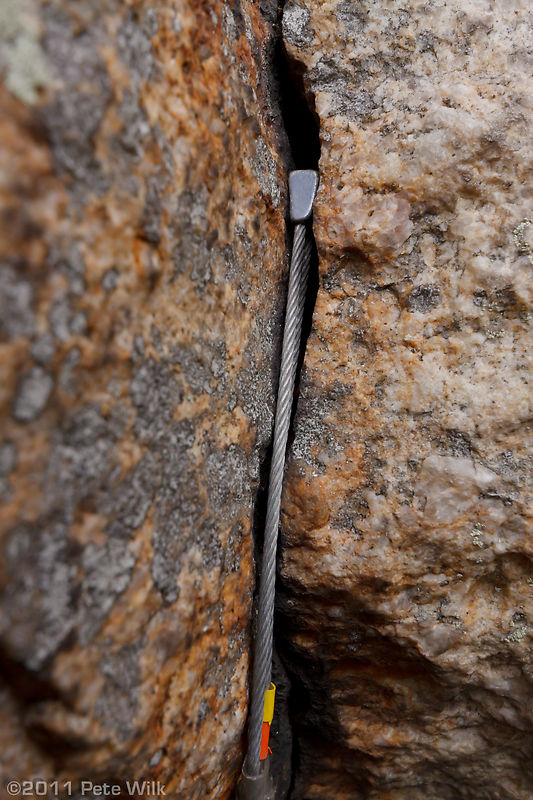Rock Climbing Gear Part 1

Given that I am a rock climber, I am going to share some of the up close views of things you might not see as a casual participant or an observer. This is the first in an unknown number of segments. …
When a climber is not top roping they are leading. Leading is the more dangerous, but more flexible form of climbing that goes beyond the YMCA rock wall you may have experienced. The wiki article covers all the basics of lead climbing so I’ll skip those here.
As the climber gets higher up the wall he/she have two basic kind of protection they can provide themselves from falling and hitting the ground, passive and active protection. Passive protection (pro) is the more basic and older of the two types. As the name implies the gear which is placed into the rock wall is passive and does nothing on its own to keep it in place.
The image above is of the most basic type of passive pro, a nut. The name comes from back in the day (50?) years ago when climbers actually slung large diameter machine nuts and jammed them into cracks in the wall. Not much has changed in the idea, just the shape.
The idea with all passive pro is to find a natural constriction in the rock where the nut, a hunk of aluminum with a cable through it, can get stuck. The constriction is almost always desired to be in the downward direction. Naturally things tend to fall down because of gravity so having the nut resist a downward force is desirable.
The image shows a well placed nut, though slightly shallow (i.e. not deep inside the crack into the page). It is well supported on both sides of the nut by the crack and the rock is solid to the sides and below the nut. This particular nut is approximately 3/16″ at its widest, 3/8″ tall, and 1/2″ deep into the crack. This particular one is rated to 6kN (1,350 lbf). This might seem overkill for a 200 lbf climber, but in reality physics can create much larger forces because of the impact force of a falling climber.
